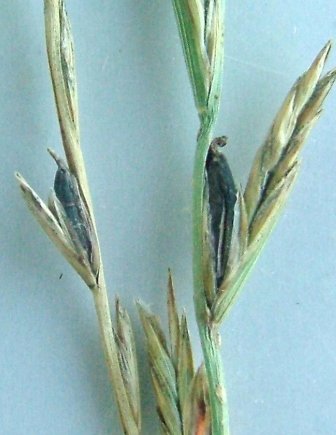Ergot
Ergot is caused by fungi in the Claviceps genus. Claviceps purpurea is the most well-known. It occurs in summer when ergots (or sclerotia) develop on grass seed heads. It can reduce yield and produces compounds toxic to stock.
Species affected
Many grasses, including ryegrass, paspalum, cereals and brome species.
Identification
Ergots are dark purplish-black, replacing a seed in the seed head. They are usually larger than seed, and protrude from the floret.
Spread
Ergots drop to the ground and lie dormant through winter. In spring they germinate to produce a fruiting body which releases spores which infect
developing florets. It is also spread in infested hay.
Prevention and management
The goal when seedheads have ergot is to prevent animals eating these. A good solution is to mow the pasture, and leave seedheads on the ground for several weeks so animals won’t eat them at the next grazing.
If there is a reasonable amount of green leaf in the pasture, pastures can be carefully grazed with sheep. Sheep are selective grazers, and avoid eating seedheads (unlike cattle which graze from the top down). Break the paddock into blocks and monitor sheep as they graze. Let them eat the green leaf but shift them before they eat the seedhead. Remove them immediately if they show any symptoms of ergot toxicity,
Don’t make hay or silage from pastures with ergot. It will still be present when you feed it out and can cause health issues particularly if used as a maintenance feed.
Ergot in seedheads can remain toxic for months if no action is taken. Seedheads gradually fall and disappear. When this happens, the risk is over

Ergots (sclerotia) developing in a ryegrass seed head.

